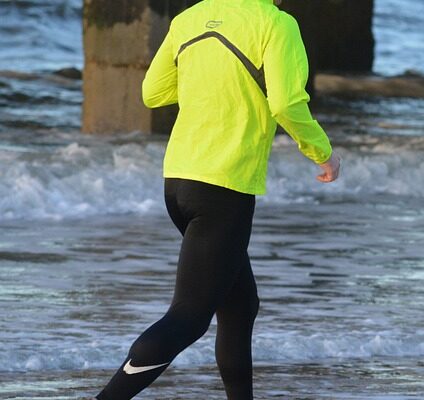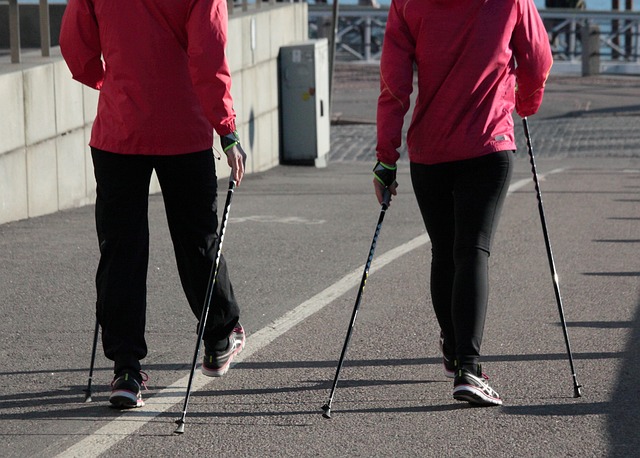If you have Type 2 diabetes, brisk walking routines can help you maintain a stable blood sugar level and body weight.
Walking and exercise are excellent methods for managing Type 2 diabetes and increasing diabetic patients’ health.
Some experts recommend a 30-minute walk at least five days a week. Learn how to walk while managing your diabetes.
Walking Workout for type 2 Diabetes
Consult your healthcare provider to determine whether walking is the best exercise for you, as well as any precautions or changes to your medications or diet that may be required.
Walking Goal: Walk for 30 minutes, including at least 20 minutes at a brisk speed of 15 – 20 minutes per mile (3 to 4 mph).
Preparations
Make the following preparations for a great walking workout before you begin:
Socks with walking shoes: You must cover your feet to avoid acquiring blisters or sores. At the top running shoe store in your neighborhood, be fitted for flat and flexible athletic shoes. Avoid cotton and tube socks. Choose sweat-wicking polyester fiber athletic socks or diabetic socks.

Walking attire: You must have a good range of motion and avoid chafing, which can lead to ulcers. Wear a workout T-shirt with workout shorts, warm-up trousers, or yoga pants. Cotton is recommended over the sweat-wicking polyester fabric.
Where to go for a walk: You can do your walking workout on a treadmill. If you want to stroll outside, search for a route that allows you to go without stopping to cross roadways. A nearby school’s track is an option, as is a greenway trail or a park with a walking loop.
Perform a foot check: Before and after each walk, inspect your feet. Blisters and hot patches may go undetected, leading to ulcers if not treated.
Walking Exercise to Manage Type 2 Diabetes
When you’re ready to begin your workout, take the following steps:
Prepare to walk: Prepare your body for your walk by performing a few exercises. Take a seat. Shrugs and shoulder circles will help to relax your shoulders and neck. March in place for a few seconds to loosen up your legs and hips.
Adjust your posture: Good posture is essential when walking at a quick speed. Take time to adjust your walking stance. Stand up straight, gaze forward, and chin parallel to the ground. Tuck in your buttocks and engage your core muscles by pulling in your stomach and turning your hips slightly forward. Straighten up by imagining a string linked to the top of your head and raising the upper part of your body with your feet flat on the ground. Another couple of shrugs will help to relax your shoulders. Bend your elbows. You are now ready to walk.
For three to five minutes, walk at an easy pace: Warm up at the start of your walk to get your blood flowing to your muscles and to continue to fine-tune your walking posture. An easy pace is one at which you can sing or hold a complete discussion without pausing to breathe heavily.
For the next 20 to 25 minutes, walk at a fast speed to receive the best health advantages from moderate exercise intensity. To assist in pumping up the tempo, move your arms faster in time with your feet. A quick walking speed is one in which you can still speak in sentences while breathing heavily. You should aim for 50% to 70% of your maximum heart rate. Check your pulse during exercise to discover if you are in the moderate-intensity zone.
Allow one to three minutes to cool down: Finish your walk by walking at a comfortable speed.
Starting Over
If you are unable to walk comfortably for 30 minutes at a time, progressively increase your duration. A beginner’s walking plan will often begin with 10 to 15 minutes of walking and gradually increase the length of your daily walking workout by a few minutes each week.
Not Getting Enough Exercise?
If you have trouble getting your heart rate up to the moderate effort zone, walk quicker with arm mobility and a nice stride, or add jogging intervals to your walks. You may also increase your heart rate by adding an incline to a treadmill workout or taking an outdoor workout route with hills and stairs.
Using fitness walking poles to raise your heart rate at a slower speed can also help.
If you like those sports, you can switch to cycling, swimming, or running. Try using different cardio machines at the gym, such as the elliptical trainer, rowing machines, or stair climber. Choose your favorite or combine them.
Walk more and sit less.
Walkers who consistently log 10,000 steps per day are more likely to meet the necessary amount of moderate physical activity. Wearing a pedometer or using an exercise app on your phone can assist you in staying active.
Sitting for more than an hour increases your chances of developing cardiovascular disease and diabetes. Inactivity warnings are now available on many activities monitors to urge you to get up and exercise.
Walking With Diabetes: Here are 10 Tips
Walking (and other forms of exercise) are good for diabetics, according to experts. There are no restrictions on the sort of exercise that individuals with diabetes can perform, and it is the best strategy to prevent weight gain and cardiovascular disease, the latter of which is the leading cause of death among diabetics.
What information do you need to know to make walking a safe and productive activity if you have diabetes? These ten suggestions may be useful.
Consult Your Doctor
Exercise can alter your insulin requirements. Consult your doctor before beginning a walking program or increasing your quantity of exercise to see whether your prescription has to be altered.
Form a Walking Habit for Type 2 Diabetes
Diabetics should strive to exercise on most days of the week. Build up to 30 minutes of brisk walking on as many days per week as you can.
Examine Your Blood Sugar Levels
Make sure to check your blood sugar levels before and after you walk to ensure they are normal. If you’re going for a lengthy walk, check your blood sugar levels at frequent intervals, especially if you’re new to walking.
Too low: If your blood sugar level is less than 140 mg/dl, you may need to take 15 grams of carbohydrates before your walk to prevent it from dropping too low.
Too high: If your blood sugar level is higher than 300 mg/dl, you may need to postpone your stroll until it drops.
Understand When to Walk If you have Type 2 Diabetes
Walking is best done 30 minutes after a meal to keep your glucose levels from climbing too high. Morning exercise is also recommended, particularly for persons with type 1 diabetes, because it avoids the day’s highest insulin levels.
Choosing the Correct Shoes
Choosing the correct walking shoes will help you stay comfortable and safe on your walks. Some shoes are made to restrict your foot motion, while others are made to provide cushioning or stability.
Taking care of your feet is especially crucial for diabetics because the disease inhibits wound healing. Blisters and other ailments, such as plantar fasciitis, can be avoided by wearing athletic shoes that are properly fitted.
Wear the Proper Socks
Cotton socks should be discarded since they trap moisture and can cause blisters. Instead, choose socks composed of moisture-wicking materials like CoolMax and Ultimax. There are also socks designed specifically for diabetics.
The fit of your socks is also important. Instead of a tube, look for socks that are fashioned like your foot. They won’t bunch up and rub together, causing blisters.
Keep Hydrated
Consume plenty of water to avoid dehydration, which you may not notice until it’s too late. Drink plenty of water one hour before walking, then a cup of water every 20 minutes. Drink another large glass of water at the end of your walk.
Consider a sports drink that replaces salts for lengthy, steamy treks of two hours or more. Just make sure to first check the carbohydrate content on the label.
Keep an eye out for hypoglycemia.
Maintain awareness of your body and how you feel when walking. It might be difficult to distinguish between sweating from effort and sweating from low blood sugar, often known as hypoglycemia.
If you notice symptoms, take action by eating a fast-acting carbohydrate. Even after taking fast-acting carbs, if your condition doesn’t improve, contact your doctor immediately. People can go into a coma in severe cases.

Take a Walk With Someone
Walking with a partner or a walking club has a number of advantages.
- One, you may ask them to keep an eye out for indicators of low blood sugar.
- Two, walking with someone else makes it easier to establish an exercise routine.
Wearing a medical identity bracelet that states you have diabetes is also advantageous. In a medical emergency, this is crucial.
Snacks to Carry
Bring food with you on your stroll in case you or your walking partner notices signs of low blood sugar. You may need to eat more carbohydrates after walking to avoid delayed hypoglycemia.
Be especially alert to symptoms and indicators when beginning or expanding your walking program. Listen to your body and visit your doctor if you have any questions about diet and activity.
Click Here to Read Vegetarian Dishe Recipes for Diabetes
To Conclude
Take the first measures to enhance your physical fitness, whether you have diabetes or are at risk of developing it.
Build up to the minimal suggested levels of activity. Then push yourself even further, as experts claim that more exercise is better.

